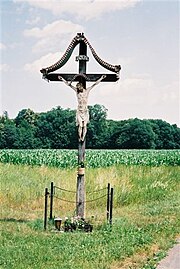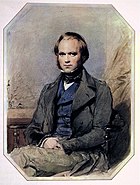When you read Beauty for Truth's Sake, you won't find much about evolution, except by implication. I mentioned this omission before, in an earlier posting triggered by a letter in the Catholic Herald. My own summary article about evolution is online here. Ignatius Press have a site dedicated to this question, called IntelligentProject.net, and they select the following passage from Pope Benedict, which goes to the heart of the question:
Christianity is faith in the Creator Spiritus, from whom comes everything that is real. Precisely this ought to give Christianity its philosophical power today, since the problem is whether the world comes from an irrational source, so that reason would be nothing but a "by-product" (perhaps even a harmful by-product) of the development of the world, or whether the world comes from reason, so that its criterion and its goal is reason. The Christian faith opts for this second thesis and has good arguments to back it up, even from a purely philosophical point of view, despite the fact that so many people today consider the first thesis the only "rational" and modern view. A reason that has its origin in the irrational and is itself ultimately irrational does not offer a solution to our problem. Only that creative reason which has manifested itself as love in the crucified God can truly show us what life is.There is no question here of setting faith against reason. But the point about evolution is that it tends to transmogrify into "evolutionism", a Theory of Everything that purports to explain even religious faith as the product of material forces. If the evolution of species is more than just a theory, this ideology of evolutionism is less than a theory; it is an hypothesis, and a poorly grounded one. People believe it mainly for the reason that they cannot see any alternative type of explanation as even possible. More on this phenomenon another time.





























